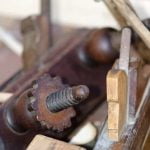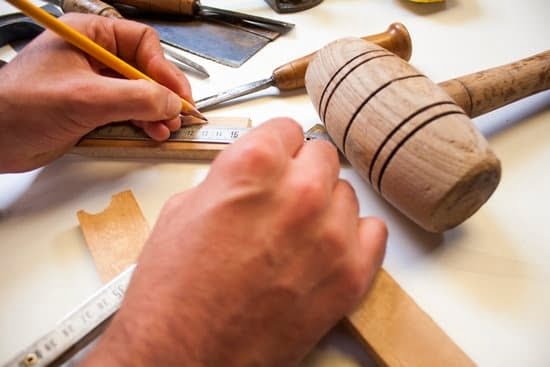Woodworking joinery is a crucial aspect of the craft that involves creating strong and durable connections between pieces of wood. Whether you’re an experienced woodworker or just starting out, understanding joinery techniques is essential for achieving professional-quality results in your projects. In this article, we will explore the various types of woodworking joinery, the tools and equipment necessary for successful joinery, safety measures to be taken, and step-by-step tutorials for creating specific joints.
Joinery plays a pivotal role in woodworking as it determines the strength, stability, and overall integrity of your creations. It involves joining two or more pieces of wood together in a way that ensures their seamless integration and structural soundness. This not only enhances the appearance of your finished project but also contributes to its longevity.
Throughout this article, we will delve into different types of joinery techniques used in woodworking, including dovetail joints, mortise and tenon joints, biscuit joints, among others. Each method has its unique characteristics and applications, which we will explore extensively to provide you with a comprehensive overview.
Additionally, we will discuss the tools and equipment required for successful joinery. Hand saws, chisels, routers, clamps – these are just a few examples of the essential tools needed to achieve precise and professional-looking joins. Furthermore, we will emphasize the importance of safety measures when working with power tools and sharp instruments.
By understanding and mastering woodworking joinery techniques through this article’s guidance, you will gain the necessary skills to undertake various woodworking projects with confidence and precision. So let us embark on this journey together as we unlock the world of woodworking joinery.
Different Types of Woodworking Joinery Techniques
Woodworking joinery involves connecting and securing wooden pieces together to create durable and aesthetically pleasing structures. There are several different types of woodworking joinery techniques, each with its own unique characteristics and purposes. In this section, we will provide a comprehensive overview of these techniques, including dovetail joints, mortise and tenon joints, biscuit joints, and more.
Dovetail Joints
One of the most well-known and widely used woodworking joinery techniques is the dovetail joint. This joint consists of interlocking wedge-shaped tails on one piece of wood that fit into corresponding sockets or “pins” on another piece of wood. The result is a strong and attractive joint that is often used in cabinetry, drawers, and boxes.
Mortise and Tenon Joints
Another common type of woodworking joinery technique is the mortise and tenon joint. This involves cutting a rectangular hole (mortise) in one piece of wood and fitting a projecting part (tenon) from another piece of wood into it. The tenon is typically secured using adhesive or wooden pins called dowels. Mortise and tenon joints are known for their strength and are often used in furniture construction.
Biscuit Joints
Biscuit joints are commonly used in panel construction or edge-to-edge joining. In this technique, an oval-shaped hole (also called a biscuit slot) is cut into the two pieces of wood that need to be joined. A wooden biscuit (typically made from compressed beechwood) is then inserted into the slots along with some adhesive before joining the two pieces together. Biscuits help align the pieces accurately while adding additional strength to the joint.
These are just a few examples of the many woodworking joinery techniques available to craftsmen. Other notable techniques include dado joints, rabbet joints, and tongue and groove joints, each with its own specific applications and advantages. By understanding and mastering these various techniques, woodworkers can bring their projects to life with sturdy and visually appealing joinery.
Tools and Equipment Required for Woodworking Joinery
Woodworking joinery requires a specific set of tools and equipment to ensure successful and precise results. Having the right tools not only enhances the quality of your joinery work but also contributes to a safer and more efficient woodworking experience. Here is an in-depth look at the essential tools needed for woodworking joinery:
Hand Saws
Hand saws are versatile tools used for cutting wood, especially when precision is required. There are various types of hand saws suitable for different joinery tasks, such as crosscut saws, rip saws, and dovetail saws. It is important to choose the appropriate hand saw based on the type of cut and accuracy needed.
Chisels
Chisels are indispensable tools in woodworking joinery as they are used for shaping, carving, and creating precise cuts in wood. They come in different sizes and shapes, including bench chisels, mortise chisels, and paring chisels. Investing in high-quality chisels with sharp edges is crucial for achieving clean and well-defined joints.
Mallet
A mallet is a wooden or rubberized hammer-like tool used in combination with chisels to drive them into wood with controlled force. Unlike regular hammers, a mallet delivers impact without damaging the handles or cutting edges of chisels.
Router
A router is an electric or handheld tool used to hollow out an area or groove in wood. It can be equipped with various bits that allow for different types of cuts like dadoes, rabbets, and dovetail joints.
Clamps
Clamps are essential for holding pieces of wood together during joinery processes such as gluing, screwing or nailing. They provide stability and ensure that the joints are tight and secure. There are several types of clamps available, including bar clamps, pipe clamps, and spring clamps, each serving a specific purpose.
It is important to note that the list above represents only a selection of essential tools for woodworking joinery. Depending on the specific joinery techniques you choose and the complexity of your projects, additional tools such as marking gauges, miter saws, drills, and biscuit joiners may also be necessary. As with any craftsmanship, investing in high-quality tools will greatly enhance your woodworking experience and yield exceptional results.
Safety Measures for Woodworking Joinery
Wearing Protective Gear
When engaging in woodworking joinery, it is crucial to prioritize your safety by wearing the appropriate protective gear. This includes safety glasses or goggles to protect your eyes from flying wood chips or debris, ear protection to reduce the risk of hearing loss caused by loud power tools, and a dust mask or respirator to prevent inhaling harmful particles generated during the woodworking process.
Additionally, it is advisable to wear snug-fitting clothing that cannot get caught in moving parts or tools. Loose clothing poses a significant safety hazard, as it can become entangled in machinery and cause accidents. Furthermore, avoiding jewelry or loose accessories is recommended to minimize the risk of injury.
Maintaining a Clean Workspace
Keeping a clean and organized workspace is not only essential for efficiency but also plays a crucial role in ensuring safety during woodworking joinery. By regularly cleaning up sawdust, wood scraps, and other debris, you can minimize the risk of tripping over objects and prevent potential fire hazards. It is recommended to use a shop vacuum or broom to maintain cleanliness while working.
In addition, organizing your tools and materials properly can improve workflow and reduce the likelihood of accidents. A clutter-free workbench allows for safer tool usage as well as better visibility while working on intricate joinery tasks.
Using Tools Correctly
Using woodworking tools correctly and understanding their limitations is vital for safe joinery practices. Before operating any power tool, familiarize yourself with its user manual and ensure that you are using it in accordance with the manufacturer’s instructions. Some general guidelines include:
– Never force a tool beyond its intended purpose or capacity.
– Keep your hands away from cutting edges and behind the line of cut.
– Maintain a firm grip on all handheld tools at all times.
– Avoid distractions while operating power tools.
– Use push sticks or blocks when necessary to keep hands a safe distance from cutting tools.
– Secure materials properly with clamps or other gripping devices to prevent accidents caused by slipping or shifting pieces.
By adhering to these safety measures and using tools correctly, woodworkers can significantly reduce the risk of injuries while enjoying the craft of woodworking joinery.
Step-by-Step Guide to Making Dovetail Joints
Dovetail joints are considered a fundamental and classic woodworking joinery technique. They are known for their strength, durability, and aesthetic appeal. In this step-by-step guide, we will walk you through the process of creating dovetail joints, providing precise measurements, marking methods, and tips to achieve perfectly fitting dovetails.
1. Measure and Mark: Start by measuring the thickness of the material you will be joining together. This will determine the size of the dovetails. Next, mark out the baseline on both pieces of wood using a square. The baseline should be perpendicular to the edges and extend across the entire width.
2. Mark Out Dovetails: Using a dovetail marking gauge or a marking knife, mark out the tails on one piece of wood and the pins on the other piece. It’s important to make accurate marks to ensure tight-fitting dovetails.
3. Cut Dovetails: Begin by cutting along the marked lines for both tails and pins using a backsaw or a dovetail saw. Make sure to cut just outside of the marked lines to leave room for fine-tuning later.
4. Remove Waste: Use a coping saw or chisel to remove most of the waste from between the tails. Take your time to carefully remove material up to your marked lines.
5. Fine-Tune Fit: With most of the waste removed, use a chisel or router plane to clean up and refine each individual tail and pin until they fit snugly together without any gaps.
6. Test Assembly: Once all tails and pins have been refined, do a test assembly by sliding them together without glue or additional pressure. Ensure that each joint fits tightly without excessive force.
7. Apply Glue: If satisfied with your dry-fit test assembly, apply an even layer of woodworking glue on both mating surfaces before sliding them together again.
8. Clamp and Wait: Clamp your joint tightly using woodworking clamps to ensure a strong bond. Following the glue manufacturer’s instructions, wait for the recommended amount of time for it to cure.
9. Finishing: After the glue has dried, remove any excess glue with a chisel or scraper. Sand and finish your project as desired.
By following these steps, you can create beautiful and functional dovetail joints that will provide both strength and elegance to your woodworking projects. Remember, practice makes perfect, so don’t be discouraged if your first attempts are not flawless. With time and experience, you will master this classic woodworking joinery technique.
| Tools Needed | Description |
|---|---|
| Backsaw or Dovetail Saw | A saw specifically designed for making fine cuts in wood. |
| Dovetail Marking Gauge or Marking Knife | Used to accurately mark out the tails and pins on the wood. |
| Coping Saw or Chisel | To remove waste material between the tails. |
| Chisel or Router Plane | To refine each tail and pin until they fit snugly together without gaps. |
| Woodworking Clamps | To hold the joint tightly together during glue-up for a strong bond. |
Mastering Mortise and Tenon Joints
Mortise and Tenon Joints: An Overview
Mortise and tenon joints are widely recognized as one of the strongest and most durable joinery techniques in woodworking. They are commonly used in furniture making, cabinetry, and other woodworking projects where strength and stability are crucial. The joint consists of two parts: the mortise, which is a cavity or hole cut into one piece of wood, and the tenon, which is a projection or tongue on the other piece of wood that fits into the mortise.
Marking and Cutting the Joint
The first step in creating a mortise and tenon joint is marking out the joint on both pieces of wood. It is important to mark accurately to ensure a precise fit. Using a try square or marking gauge, mark out the dimensions for both the mortise and tenon on their respective pieces of wood.
Next, it is time to cut the mortise. This can be done using various methods such as chisels, routers, or even dedicated mortising machines. Take care to remove small amounts of material at a time to avoid damaging the surrounding wood or creating an oversized mortise.
Once the mortise has been cut, it is time to shape the tenon. This can be done using hand saws or power tools such as table saws or bandsaws. Start by removing excess material around the edges of the tenon until it reaches close to its final dimension. Then proceed with fine-tuning until you achieve a snug fit in the mortise.
Fitting and Variations
After cutting both the mortise and tenon, test for fit by inserting the tenon into the mortise. It should fit snugly but not too tight that it requires excessive force to insert or remove.
There are also different variations of mortise and tenon joints depending on the specific woodworking project and desired aesthetics. These variations include through mortises, double tenon joints, angled tenons, and haunched tenons. Each variation has its own unique characteristics and applications, allowing woodworkers to explore different design possibilities.
The mortise and tenon joint is versatile and can be used in various woodworking projects such as tables, chairs, cabinets or doors. It provides exceptional strength and stability, making it a popular choice among woodworkers. By mastering this classic joinery technique, woodworkers can take their craftsmanship to the next level.
Exploring Advanced Woodworking Joinery Techniques
Exploring Advanced Woodworking Joinery Techniques
In addition to the basic joinery techniques discussed earlier, there are more advanced methods that can elevate your woodworking projects to the next level. These techniques require precision and attention to detail, but with practice, they can become valuable assets in your woodworking skillset. In this section, we will explore three advanced woodworking joinery techniques: the finger joint, box joint, and half-lap joint.
Finger Joint
The finger joint, also known as a comb joint or box joint, is a strong and visually appealing method of joining two pieces of wood at right angles. This technique creates interlocking “fingers” on each piece that fit together snugly. The finger joint provides substantial glue surface area, resulting in a sturdy bond between the two pieces of wood.
To create a finger joint, first mark out and cut identical notches along the edge of both workpieces using a table saw or a router with a dado blade attachment. It is crucial to ensure that the depth of each notch matches the thickness of the adjacent workpiece perfectly.
Then, carefully align and clamp the two pieces together, ensuring that the fingers on one piece fit precisely into the notches on the other piece. Apply glue to both surfaces before securing them with clamps until dry.
Box Joint
The box joint is similar to the finger joint but is typically used for creating larger joints where additional strength is required. This technique creates rectangular-shaped interlocking profiles instead of fingers. The box joint is commonly employed in making drawers and can add an attractive design element.
To make a box joint, start by measuring and marking equal intervals along the edges of both workpieces using square or combination squares. These marks will determine where each notch will be cut. Using a table saw or a router with a dado blade attachment, cut matching notches along one edge of each workpiece, ensuring that the width and depth of each notch are consistent.
Then, slide the two pieces together, alternating the notches to create a tight-fitting joint. Apply glue to both surfaces before clamping them together until dry.
Half-Lap Joint
The half-lap joint is a versatile technique that involves removing half of the thickness from each of the two workpieces where they intersect, creating overlapping sections with a flush surface. This type of joint is commonly used in constructing frames, boxes, and cabinetry.
To make a half-lap joint, measure and mark the desired length along one edge of both workpieces. Next, using a saw or chisel, remove half of the material at these marked areas to create rectangular-shaped notches that are equal in depth to half the thickness of the wood. Ensure that both notches align perfectly when assembling the joint. Lastly, apply glue to both surfaces before clamping them together until dry.
| Joinery Technique | Description |
|---|---|
| Finger Joint | A strong and visually appealing method of joining two pieces of wood at right angles by interlocking “fingers” on each piece. |
| Box Joint | Suitable for larger joints where additional strength is required, creates rectangular-shaped interlocking profiles. |
| Half-Lap Joint | Involves removing half of the thickness from each workpiece where they intersect to create overlapping sections with a flush surface. |
Joinery for Different Woodworking Projects
Joinery is a crucial aspect of woodworking, as it determines the strength and durability of the final product. Different woodworking projects require specific joinery techniques that are best suited to their purpose and functionality. In this section, we will explore the various joinery methods suitable for different woodworking projects, such as making cabinets, tables, chairs, and frames.
When it comes to making cabinets, one popular joinery technique is the dado joint. This joint involves creating a groove or channel in one piece of wood that fits perfectly with another piece of wood. Dado joints are commonly used to create shelves within cabinets, providing stability and support for heavy items.
For constructing tables, the most common joinery method is the mortise and tenon joint. This type of joint involves creating a cavity (mortise) in one piece of wood that perfectly accommodates a projecting piece (tenon) on another piece of wood. Mortise and tenon joints provide exceptional strength and stability, making them ideal for table legs or table aprons.
When building chairs, one important consideration is ensuring strong connections between the chair legs and seats or backrests. One suitable joinery technique for this purpose is using double dowel joints or loose tenon joints. These joints involve drilling matching holes on both pieces of wood and inserting dowels or loose tenons to hold them together securely.
In crafting frames for artwork or mirrors, miter joints are commonly used to create precise 45-degree angles at the corners. These joints provide an elegant and seamless appearance while maintaining structural integrity. Reinforcing miter joints with splines can further enhance their durability.
Overall, choosing appropriate joinery methods based on the project’s purpose and functionality is essential for achieving quality results in woodworking projects. By understanding the specific requirements of each project type – whether it be cabinets, tables, chairs, or frames – woodworkers can select and implement the most suitable joinery techniques to ensure the longevity and stability of their creations.
Troubleshooting Common Issues in Woodworking Joinery
Woodworking joinery can be a rewarding and intricate craft, but it is not without its challenges. In this section, we will address some common problems that woodworkers may encounter during joinery projects, as well as provide solutions and prevention techniques.
One common issue faced by woodworkers is the presence of gaps in joints. Gaps can compromise the strength and aesthetic appeal of a joint, so it is essential to address them. The primary cause of gaps is usually improper measuring and cutting.
To prevent this problem, it is crucial to take accurate measurements and ensure precise cuts. Double-checking measurements with a ruler or square can help minimize errors. Additionally, using sharp tools and maintaining proper technique while cutting will also contribute to cleaner joinery.
Inaccurate measurements are another challenge that woodworkers may face during joinery. Even slight discrepancies in measurements can result in ill-fitting joints. To avoid this issue, it is important to use quality measuring tools such as tape measures or calipers. When making multiple cuts for a joint, consider using jigs or templates to ensure consistency across pieces. Remember to measure twice and cut once – taking extra time for precision will save you from having to redo your work later on.
Choosing the wrong joinery technique for a specific project can lead to disappointment and frustration down the line. Different joint types have various purposes and strengths, so it is vital to select the appropriate one for your project’s needs. Researching different joinery methods and their applications beforehand can help you make an informed decision. Keep in mind factors such as the type of wood used, load-bearing requirements, and aesthetics when choosing a joint type.
By addressing these common issues and implementing preventive measures, woodworkers can overcome challenges in their joinery projects with greater confidence and success. Remember to always take accurate measurements, use appropriate techniques, and select suitable joinery methods for each project. By doing so, you will be well on your way to creating beautiful, durable, and precise joinery that will stand the test of time.
Conclusion
In conclusion, this article has provided a comprehensive overview of woodworking joinery techniques and the essential tools required for successful joinery. We have explored various types of joinery, including dovetail joints, mortise and tenon joints, biscuit joints, and more. Additionally, we have discussed safety measures to be taken while working with power tools and sharp instruments.
Furthermore, this article has given step-by-step guides to creating dovetail joints and constructing mortise and tenon joints. We have also delved into advanced joinery techniques like finger joints, box joints, and half-lap joints. Additionally, we have highlighted the importance of choosing appropriate joinery methods based on the purpose and functionality of different woodworking projects.
As readers, you now possess a wealth of knowledge about woodworking joinery that can be applied to your own projects. By mastering these techniques, you will be able to create strong and aesthetically pleasing joints in your woodworking endeavors. Remember to always prioritize safety by wearing protective gear and maintaining a clean workspace.
Take time to troubleshoot common issues in joinery such as gaps in joints or inaccurate measurements. With practice and patience, you can overcome these challenges and achieve professional-quality results in your woodworking projects.
In conclusion, woodworking joinery is an essential skill for any woodworker or DIY enthusiast. The techniques discussed in this article will enhance the structural integrity and beauty of your creations. Embrace the joy of woodworking by incorporating these joinery techniques into your projects today.

Hi everyone! I’m a woodworker and blogger, and this is my woodworking blog. In my blog, I share tips and tricks for woodworkers of all skill levels, as well as project ideas that you can try yourself.





